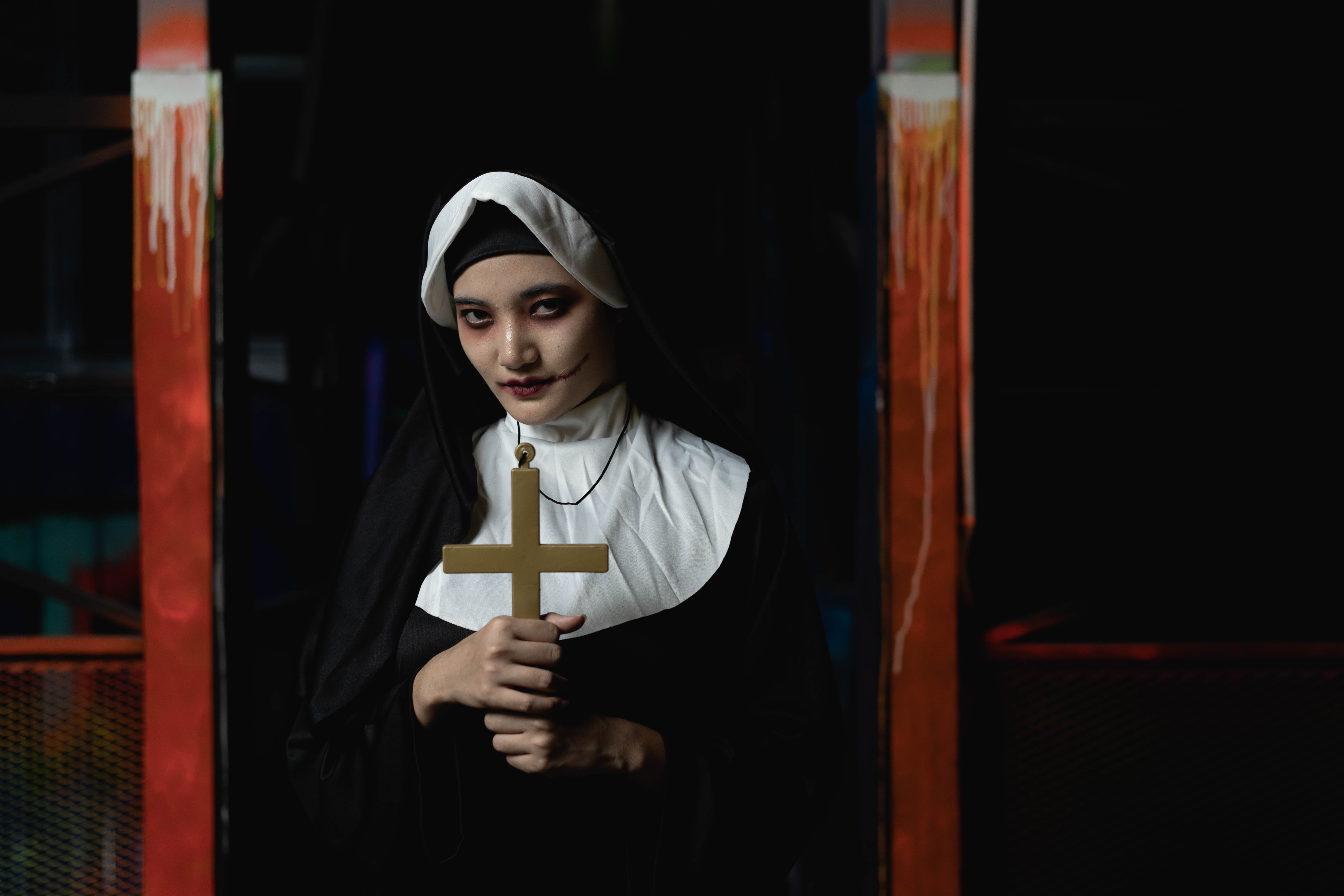In St. Andrews, by the coast of Scotland, lies The Pends.
An unusual word, more resembling a bodily condition than an actual, perceivable thing. But it is a thing, assuredly. It’s the name of a road that flanks the remnants of St. Andrew’s Cathedral. Its name derives from the architectural term, pend, which is a path that passes through a building.
And, yes, the term is very Scottish.
Yet, you could hardly call a few archways and walls a building, but at one point it was indeed. It used to be the gatehouse for the cathedral.
If you were ever to take a stroll or a drive through The Pends, you’ll come across a short lane. It’s nearly hidden, but it’s there. Locals call it the Nun’s Walk. It leads to St. Leonard’s School, a boarding school.
Perhaps its name is indicative of a time where nuns did use it to walk to and fro the cathedral.
Or perhaps it’s where she lives, waiting in the dark for those unsuspecting travelers.
The Veiled Nun of St. Leonard.

Centuries ago, when St. Andrew’s Cathedral stood tall and proud, lived a woman.
She came from an old Scottish family and was renowned for her almost unnatural beauty and her terrible quick wit. She was adored by every eligible suitor in town. They would line up to her door, begging for her hand in marriage. She would turn them all away. Not one seemed to be fit and worthy of a husband for her.
Yet, one day, to the shock and surprise of the world, she was betrothed. A handsome and fine fellow, no different than the dozens who kneeled at her doorstep, had won her heart and her hand. They were set to be married.
The months passed as preparations were on their way to bond these two in holy matrimony. But in a sudden turn of events, the woman denounced the entire wedding and vowed to never become a bride of a man but a bride of God.
She was to become a nun.
News reached her beloved about this change of heart, so he had his fastest horse brought to him and raced to St. Andrews from Edinburgh to confront his bride.
He stormed the cathedral and found her, shrouded in black robes and a veil. He flung the veil back to meet her gaze, but what he met was not his bride.
It wasn’t even of God.

The once beautiful face of his bride-to-be stared at him, mutilated and bloody.
Her eyelids and lips were gone, cut off by a knife. Her nostrils were slit open, and her cheeks were charred and burned from hot iron. She vowed never to be a bride of man, and she made sure of it.
Her betrothed’s face turned of ash white and he ran from her sight back to Edinburgh. She never saw him again.
In the coming days, she had received word that her once-beloved had taken his life. And in the coming weeks, she died. Whether of remorse or her afflictions, it is not known. Nor the real reason why she denounced the wedding and mutilated her face.
Alternate tellings of the story say that her lover had died before their wedding and that she disfigured herself so that no man may ever love her again, for she could not bear the thought of her losing her heart again.
Another version says that she was rejected by the man she loved and she destroyed her face out of sadness and anger.

Now, she haunts Nun’s Walk in the dead of night, lantern at hand to show you her horrid face. They say she is a bad omen, that ill fortune will befall you if you gaze upon her.
Others say that whoever looks upon her face will die in a year’s time.
Be wary of the lamp light.
Be wary of the Veiled Nun of St. Leonard.